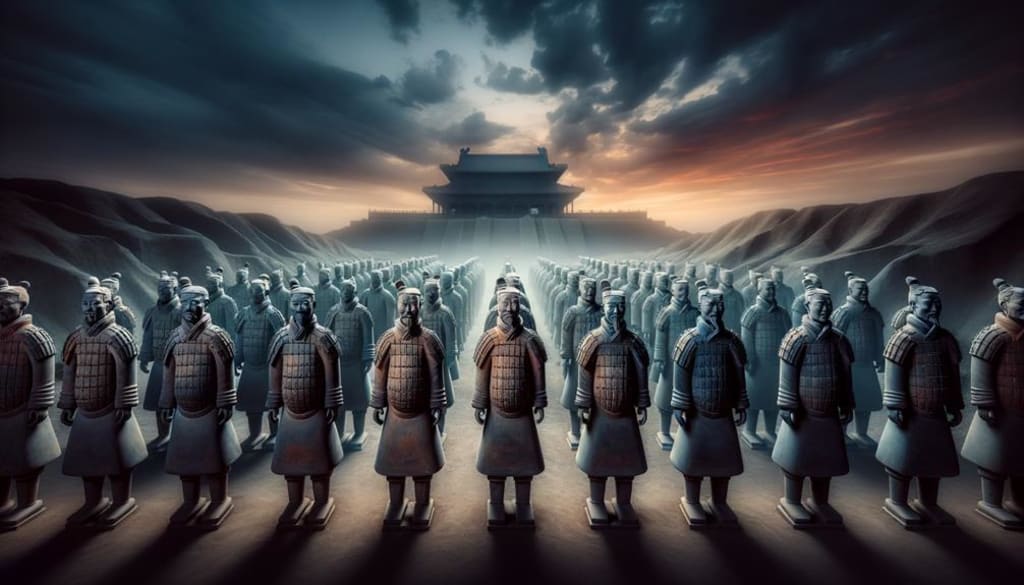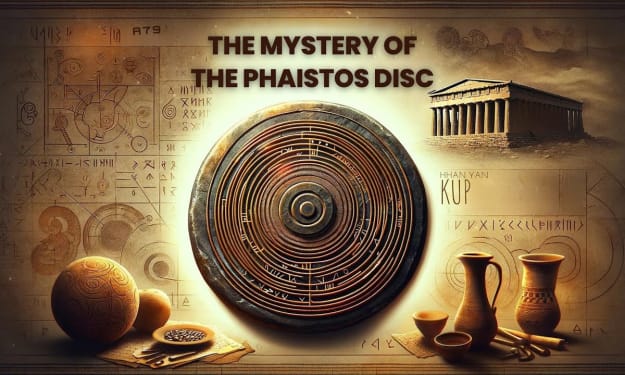"Qin Shi Huang's Terracotta Army: Unearthing the Legacy of China's First Emperor"
History

Qin Shi Huang's Terracotta Army is one of the most astonishing archaeological discoveries of the 20th century, captivating the world with its grandeur and historical significance. Unearthed in 1974 by local farmers near the city of Xi'an in Shaanxi Province, China, this vast army of life-sized clay soldiers offers a mesmerizing glimpse into the power and vision of China's first emperor, Qin Shi Huang. The Terracotta Army, buried for over two millennia, serves as a testament to the emperor's ambition, the technological prowess of ancient China, and the rich cultural heritage that continues to inspire awe and scholarly interest.
The Terracotta Army was created to accompany Qin Shi Huang in the afterlife, reflecting the emperor's belief in an eternal realm where he would continue to rule. This grand mausoleum complex, which includes the army, chariots, horses, and various other figures, was designed to ensure that Qin Shi Huang had everything he needed to maintain his sovereignty beyond death. The scale and detail of the Terracotta Army are truly staggering, with estimates suggesting that there are over 8,000 soldiers, each uniquely crafted with distinct facial features, expressions, and armor, reflecting the diversity and individuality of real soldiers.
The creation of the Terracotta Army involved remarkable craftsmanship and technological innovation. Artisans employed advanced techniques to mold and fire the clay figures, achieving a level of realism and detail that is unparalleled in ancient art. Each soldier's face was individually sculpted, and their bodies were assembled from standardized parts, showcasing a sophisticated understanding of mass production and artistic personalization. The figures were originally painted in vibrant colors, although much of the paint has faded over the centuries, further highlighting the skill and artistry involved in their creation.
Qin Shi Huang, who unified China in 221 BCE and founded the Qin Dynasty, was a ruler of immense ambition and vision. His achievements include the standardization of weights, measures, and currency, the construction of extensive road networks, and the beginning of the Great Wall of China. The Terracotta Army, part of his grand mausoleum, symbolizes his desire to protect and consolidate his legacy. This monumental project reflects not only his quest for immortality but also his ability to mobilize vast resources and labor to achieve his vision.
The discovery of the Terracotta Army has provided invaluable insights into the military organization, culture, and artistry of the Qin Dynasty. The figures include not only soldiers but also charioteers, archers, and cavalry, each depicted with meticulous attention to detail. The presence of high-ranking officers and various military formations suggests a highly organized and disciplined army, mirroring the structure of Qin Shi Huang's formidable forces. The excavation of the site has also revealed weapons and other artifacts, shedding light on the technological advancements of the period.
The Terracotta Army is more than just a collection of statues; it is a window into the past, offering a tangible connection to one of the most significant periods in Chinese history. The site continues to be a focal point for archaeological research, with ongoing excavations and studies aimed at uncovering more about the mausoleum and its contents. The discovery has also sparked global interest, attracting millions of visitors to the site and inspiring countless exhibitions, documentaries, and scholarly works.
In modern times, the Terracotta Army stands as a symbol of China's rich cultural heritage and its enduring legacy. The preservation and study of this archaeological wonder have become a priority, with efforts to protect and conserve the figures for future generations. Advances in technology, such as 3D scanning and digital modeling, are being used to document and analyze the figures in greater detail, providing new insights and helping to preserve their intricate features.
The Terracotta Army's significance extends beyond its historical and cultural value; it also serves as a powerful reminder of the human capacity for creativity, organization, and ambition. The story of its creation, burial, and eventual discovery highlights the enduring impact of Qin Shi Huang's reign and the sophisticated society he ruled. The figures, standing in silent ranks, continue to evoke a sense of wonder and admiration, capturing the imagination of people around the world.
In conclusion, Qin Shi Huang's Terracotta Army is a remarkable testament to the vision and power of China's first emperor. Its discovery has not only enriched our understanding of ancient China but also provided a lasting symbol of human ingenuity and ambition. As we continue to explore and preserve this incredible site, the Terracotta Army remains a powerful link to the past, inspiring awe and respect for the achievements of one of history's most remarkable civilizations.
About the Creator
Marveline Merab
“History never repeats itself. Man always does.”
― Voltaire
Enjoyed the story? Support the Creator.
Subscribe for free to receive all their stories in your feed. You could also pledge your support or give them a one-off tip, letting them know you appreciate their work.






Comments
There are no comments for this story
Be the first to respond and start the conversation.